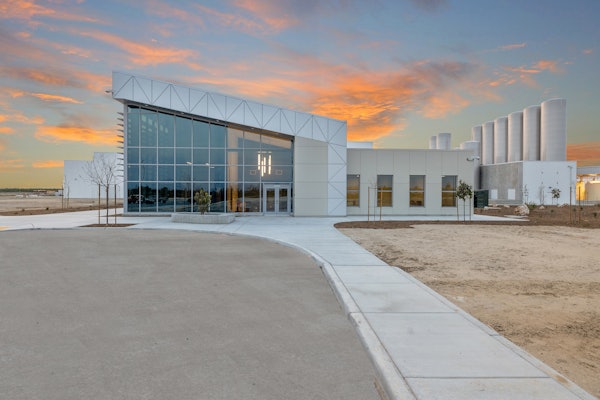This article originally appeared in Automation World magazine.
Food and beverage is one of the fastest changing industries today. Pressures from safety, volume, cost to produce and quality standpoints continue to escalate, along with traceability and genealogy. To stay ahead of the competition and contribute to the bottom line, companies must remain flexible. Automating the plant is essential, and automated guided vehicles (AGVs) can enhance plant floor safety, improve material movement, ensure consistency and improve inventory tracking and traceability.
AGVs have been used almost exclusively in the automotive industry over the past 25 years but are now replacing forklifts in other industries as companies find them more efficient. Additional benefits include reduced product damage, more cost-effective processing, reinforced workforce discipline and reduction of safety-related incidents. AGVs aren’t for every business, but in the right operations they have many benefits. Typical applications include storing and moving raw materials in warehouse locations, delivering raw materials to production lines, pickups and drop-offs at the end of the line, and automated loading and unloading of transport.
Another key benefit of using AGVs is ensuring the safety of employees. This is equally important to the outcome of product safety and quality, as well as to the success of the company. Stressful, fast-paced operations can lead to accidents—slips and falls are the greatest risks for workers in food processing plants. Accidents result not only in loss of work as employees are off the job, but can also financially impact the business with insurance and legal claims.
In addition, it has become more difficult to fill forklift positions in plants as fewer people are willing to perform repetitive tasks, and it is more important for the business to have employees doing jobs that are more critical to the bottom line. AGVs can perform the same duties as multiple forklift operators during several shifts, saving thousands in man-hours. This automation also gives processors the ability to determine which functions add value and require that it be done by a person—the rest can be automated.
AGVs can be implemented in many areas of the plant operations and are preferred in some less operator-friendly environments, like cold storage and freezers. Additionally, they allow manufacturers to reduce the time spent on non-value-add functions and provide flexibility and optimization in routing product through the plant.
One company employed two automated vehicles to carry ingredient sacks from storage to the mixers. The vehicles followed a guidance system—a virtual map of the plant—to accomplish its task. The implementation of the AGVs improved safety, throughput and flexibility. The system decreased inventory and work in progress (WIP). Availability of product tracking provided feedback through existing business systems for order filling, ingredient inventory and product throughput.
AGVs can be the answer for processors that need to increase operational efficiency, throughput and quality, all while protecting employees and the company, and maximizing process safety.
This article originally appeared in Automation World magazine.






















